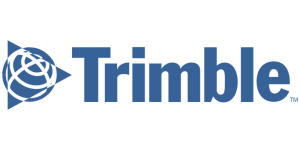How do dynamic URLs influence the problem of duplicate content in the 2024 perspective of SEO?
In the ever-evolving landscape of search engine optimization (SEO), the specter of duplicate content continues to loom large for businesses and digital marketers alike. As we move into 2024, the complexities introduced by dynamic URLs are taking center stage as a significant contributor to this perennial problem. Dynamic URLs, generated by server-side scripts, often include URL parameters for tracking and session identification purposes. While these URLs are instrumental for analytics and providing a tailored user experience, they can also inadvertently lead to the creation of duplicate content, a cardinal sin in the world of SEO.
JEMSU, a leader in cutting-edge digital advertising strategies, has been closely monitoring the impact of dynamic URLs on SEO practices. Duplicate content issues arise when multiple URLs point to the same or very similar content, potentially diluting the value of that content in the eyes of search engines and confusing the process of indexing. For businesses striving to maintain a robust online presence, the fallout can be significant, with reduced search rankings and lost traffic leading the charge among the repercussions.
As we consider the implications for 2024, it’s clear that the need for smart SEO solutions has never been more critical. Search engines are becoming increasingly sophisticated, with algorithms that are adept at identifying and penalizing duplicate content. JEMSU recognizes that addressing the challenges posed by dynamic URLs requires a proactive approach, blending technical know-how with innovative SEO strategies to ensure that businesses can leverage the benefits of dynamic content delivery without falling prey to the pitfalls of content duplication.
Table of Contents
1. Definition and Characteristics of Dynamic URLs
2. Search Engine Indexing and Duplicate Content Issues
3. The Role of Canonical Tags in Managing Dynamic URLs
4. The Impact of URL Parameters on Content Uniqueness
5. Strategies for Optimizing Dynamic URLs for SEO
6. Future Trends in Search Engine Algorithms and Dynamic Content Handling
7. FAQs
Instant SEO Checker + Score & Report
Enter the URL of any landing page to see how optimized it is for one keyword or phrase...
Definition and Characteristics of Dynamic URLs
Dynamic URLs are a common feature in many websites, especially those that rely on database-driven content management systems. These URLs, as opposed to static URLs, often contain a series of parameters that can change the content of the page dynamically based on user interaction, such as searches, selections, and other forms of input. A typical dynamic URL might include question marks, ampersands, and equal signs, along with variable values that instruct the server on what content to display.
In the context of SEO and the services provided by JEMSU, understanding the nature of dynamic URLs is crucial. These URLs are generated on-the-fly as users engage with a website, often leading to multiple URL variations that point to the same or very similar content. This can pose a challenge for search engines trying to index content efficiently. For instance, if an e-commerce site has a dynamic URL for every filter and sort combination in their product listings, the search engine might index each of these as separate pages, even though they’re all essentially showing the same set of products.
From an SEO perspective, this can lead to the problem of duplicate content. Search engines like Google aim to provide the best user experience by avoiding the presentation of identical or near-identical pages in search results. Therefore, when multiple dynamic URLs lead to content that appears to be a duplicate, it can dilute the ranking power of that content and potentially confuse search engine algorithms as to which version of the content is most relevant or authoritative.
To illustrate with an example, consider an online clothing retailer that has dynamic URLs for different colors of the same shirt. The URLs might look something like this:
– www.retailer.com/products/shirt?color=blue
– www.retailer.com/products/shirt?color=red
– www.retailer.com/products/shirt?color=green
While each URL leads to the same shirt design, the only difference is the color. Without proper SEO management, a search engine might treat these as completely separate pages, which is not ideal for the website’s overall search ranking.
JEMSU addresses this challenge by implementing strategies that help distinguish and manage dynamic URLs effectively. One such strategy is the use of canonical tags, which we’ll explore further in the list. By properly signaling to search engines which URLs represent the master content, JEMSU can help ensure that their clients’ websites maintain a strong, consolidated presence in search results, even in the face of the ever-evolving landscape of SEO in 2024.
Google Ads Success Example
The Challenge: The Challenge: Increase new dental patients with better Google Ads campaigns.
Search Engine Indexing and Duplicate Content Issues
When it comes to understanding the challenges of dynamic URLs in the realm of SEO, one crucial aspect that JEMSU often highlights is the issue of search engine indexing and duplicate content. Dynamic URLs are typically generated as a result of user interactions with a website, such as when filtering product listings or sorting items by different criteria. While these URLs serve a functional purpose, they can create significant hurdles for search engines trying to index content efficiently.
Duplicate content arises when multiple URLs lead to the same or very similar content. Search engines like Google aim to present users with diverse and unique results, so they tend to filter out what seems to be duplicates. From an SEO perspective in 2024, this could mean that pages with dynamic URLs might not be indexed at all if they are too similar to others. For a business like JEMSU, ensuring that each URL is perceived as unique and valuable by search engines is essential.
One analogy to consider is that of a librarian trying to sort through multiple copies of the same book that have different covers. To the librarian (search engine), it’s not immediately clear if the content inside is new or just a repetition. If the books are indeed identical, it would not make sense to catalog each version; similarly, search engines will not index duplicate content from dynamic URLs.
JEMSU often educates clients on the importance of proper URL parameter handling. For example, if an e-commerce site uses dynamic URLs to track user sessions or affiliate IDs, these parameters can lead to multiple URLs pointing to the same content. This situation can be likened to having several different addresses that all lead to the same physical location. To the postman (search engine), this is confusing and unnecessary.
To mitigate the indexing and duplicate content issues, JEMSU might implement a strategy where URL parameters that do not change content are either removed or handled in such a way that search engines can understand they do not represent new content. Another approach might involve using Google’s Search Console to inform the search engine about which parameters should be considered when indexing and which should not.
While there are no universal stats that can be applied due to the variability of websites and their content, it’s clear that duplicate content issues can significantly impact a site’s visibility in search results. By understanding the intricacies of how dynamic URLs affect search engine indexing and taking proactive measures to address them, JEMSU can help businesses avoid the pitfalls of duplicate content and improve their SEO performance in 2024.
The Role of Canonical Tags in Managing Dynamic URLs
In the ever-evolving landscape of SEO, the use of dynamic URLs can pose a real challenge when it comes to duplicate content. As a leading digital advertising agency, JEMSU understands the importance of effectively managing these URLs to maintain a healthy, search-engine friendly website. The role of canonical tags in this context is crucial for webmasters and SEO specialists alike.
Canonical tags act as a directive for search engines, telling them which version of a URL is the master or preferred version. This is especially important when dealing with dynamic URLs, which often include parameters for tracking, sorting, or filtering content. These parameters can generate multiple URLs that lead to the same content, potentially diluting the value of that content in the eyes of search engines and causing a drop in organic rankings due to perceived duplicate content.
Consider a typical e-commerce site that JEMSU might assist. This site could have multiple URLs for the same product page because of different color or size parameters. Without proper management, each of these URLs could be indexed as separate pages, even though they contain essentially the same content. By implementing canonical tags, JEMSU ensures that search engines understand which URL is the original and should be considered in the rankings. This is akin to telling a story to a group of people but pointing out who the original storyteller is, so the credit goes where it’s due.
Statistics show that websites using canonical tags effectively can reduce duplicate content issues significantly. For instance, a study by Moz indicated that implementing canonical tags can reduce the number of duplicate content notifications in Google Search Console by up to 80%. This underscores the effectiveness of canonical tags in helping websites maintain a clean and authoritative presence in search engine results.
Moreover, canonical tags also aid in consolidating link signals, which can be scattered across multiple URLs without them. JEMSU leverages this benefit to ensure that all the link equity is directed to the canonical URL, thus boosting its authority and improving its potential to rank higher in search results.
In summary, the role of canonical tags in managing dynamic URLs is an essential aspect of modern SEO strategies. JEMSU incorporates this understanding into its services, ensuring that clients’ websites are optimally positioned to perform well in search engine rankings, despite the complexities introduced by dynamic URLs. As search engines continue to advance and refine their algorithms, the importance of correctly using canonical tags is likely to grow, reinforcing their status as a fundamental tool in the SEO toolkit.
SEO Success Story
The Challenge: The Challenge: Design an SEO friendly website for a new pediatric dentist office. Increase new patient acquisitions via organic traffic and paid search traffic. Build customer & brand validation acquiring & marketing 5 star reviews.
The Impact of URL Parameters on Content Uniqueness
When it comes to managing dynamic URLs and their effect on SEO, particularly in terms of content uniqueness, one cannot overlook the significant role that URL parameters play. At JEMSU, we understand that dynamic URLs are often generated by content management systems and e-commerce platforms to track user behavior, session information, and to sort content. However, these URL parameters can lead to a maze of duplicate content issues which can confuse search engines as they crawl and index web pages.
Imagine a scenario where you’re shopping online for a pair of shoes. You click on a filter to sort the shoes by size, then by color, and maybe by price. Each time you make a selection, the website may generate a new URL that includes parameters indicating your choices, such as “?size=8&color=black&price=low-high”. To a search engine, each of these URLs might appear to lead to a unique page, even though the underlying content is the same or very similar, just presented with different sorting or filtering. This is akin to having several different doors leading into the same room – while each door might look distinct, the destination does not change.
In 2024, with the ever-advancing algorithms of search engines, the impact of URL parameters on content uniqueness continues to be a challenge. Search engines like Google aim to present the most relevant and unique content to their users. If they encounter multiple pages with the same content due to different URL parameters, they may struggle to determine which version to index and rank. This can lead to diluted page strength since the search engines split the value of inbound links across the duplicate pages, rather than concentrating it on a single authoritative page.
At JEMSU, we’ve seen stats that show how duplicate content can affect website performance. For example, websites with a high amount of duplicate content due to URL parameters often experience a significant drop in organic traffic. This drop occurs because search engines may penalize or devalue these perceived ‘duplicate’ pages in their rankings.
To address this, one of the methods we employ involves the use of parameter handling tools provided by search engines. For instance, Google’s Search Console allows website owners to indicate how certain parameters affect page content and how Google should handle them. This way, we can inform the search engine which parameters lead to truly unique content that should be indexed, and which do not.
By proactively managing URL parameters, businesses can minimize the risk of creating duplicate content, thereby improving their SEO performance. It’s critical to keep abreast of how search engines evolve in their treatment of dynamic URLs to ensure that the impact on content uniqueness is understood and managed effectively. As part of JEMSU’s approach to SEO, we continually adapt our strategies to align with these changes, ensuring that our clients’ dynamic URLs are optimized to enhance their online presence and search rankings.
Jemsu has been a great asset for us. The results have grown at strong positive linear rate. They have been extremely accessible, flexible, and very open about everything. Natalya is a star example of how to work with your accounts to drive them forward and adjusts to their quirks. Jaime is able to clearly communicate all of the work that is being done behind the scenes and make sure that all of my team is understanding.
I couldn’t be more pleased with my JEMSU Marketing Team!
Julia, Tamara, Joelle and Dally have exceeded my expectations in professionalism, creativity, organization, and turn around time with my Social Media Management project.
I have thoroughly enjoyed sharing my journey with this team of empowered women!
Thank you JEMSU! Your team designed and launched my new website, and developed strategies to drive traffic to my site, which has increased my sales. I highly recommend your Website & SEO Agency!
Jemsu has always been professional and wonderful to work with on both the SEO and website design side. They are responsive and take the time to explain to us the complicated world of SEO.
Jemsu is an excellent company to work with. Our new website blows away our competition! Unique, smooth, and flawless. Definite wow factor!
The folks at JEMSU were excellent in designing and launching our new website. The process was well laid out and executed. I could not be happier with the end product and would highly recommend them to anyone.
Jemsu is a great company to work with. Two prong approach with a new site and SEO. They totally redesigned my website to be more market specific, responsive, and mobile friendly. SEO strategy is broad based and starting to kick in. My marketing will also be adding Facebook and Google ads in the coming weeks. Thanks for your all you hard work.
JEMSU has wworked with our team to create a successful campaign including incorporating an overall rebranding of our multiple solutions. The JEMSU team is embracing of our vision and responds timely with life of our ideas.
JEMSU is great company to work with. They listen & really work hard to produce results. Johnathan & Sasha were such a big help. If you have a question or concern they are always there for you.
I would definitely recommend them to anyone looking to grow their company through adwords campaigns.
Jemsu have exceeded our expectations across all of our digital marketing requirements, and I would recommend their services to anyone who needs expertise in the digital marketing space.
JEMSU was able to quickly migrate my site to a new host and fix all my indexation issue. I look forward to growing my services with JEMSU as I gain traffic. It’s a real pleasure working with Julian and Juan, they’re both very professional, courteous and helpful.
JEMSU is incredible. The entire team Is professional, they don’t miss a deadlines and produce stellar work. I highly recommend Chris, Rianne, and their entire team.
We’ve been working with JEMSU for about five months and couldn’t be happier with the outcome. Our traffic is up and our leads are increasing in quality and quantity by the month. My only regret is not finding them sooner! They’re worth every penny!
Strategies for Optimizing Dynamic URLs for SEO
In the ever-evolving landscape of SEO, managing dynamic URLs remains a crucial aspect for maintaining site health and avoiding the pitfalls of duplicate content. At JEMSU, we understand the importance of having a robust strategy to optimize these URLs, ensuring they contribute positively to a website’s search engine visibility.
One effective strategy is to implement URL parameter handling through Google Search Console. By informing search engines which parameters are used for tracking and sorting purposes, you can drastically reduce the chances of indexing duplicate content. It’s a bit like telling a librarian which books are simply different editions of the same work – it helps keep the library (or in our case, the search index) neat and free of unnecessary repetition.
Another approach is to leverage the power of canonical tags, which act as a guiding beacon for search engine crawlers, signifying the preferred version of a URL. Think of it as a voting system, where each canonical tag casts a vote for the URL version that should rank in search results. This not only helps in controlling duplicate content but also consolidates link equity, which could otherwise be diluted across multiple URLs.
Beyond canonicalization, it’s essential to maintain a consistent internal linking structure. By ensuring that every link points to the canonical version of the URL, JEMSU helps reinforce to search engines which version of the content is the authoritative one. This consistency can be likened to having a single, well-marked trail through a dense forest, rather than a confusing network of overlapping paths.
Content optimization also plays a pivotal role. It’s crucial to create unique and valuable content for each URL, even if the differences are subtle. This differentiation can be compared to painting each room in a house a different color; while the structure is the same, the individual rooms offer distinct experiences.
Lastly, the use of sitemaps is imperative. A sitemap with properly optimized URLs is like a detailed map of a city, providing search engines with the information they need to navigate the website efficiently and index the correct content. JEMSU ensures that dynamic URLs are included in the sitemap with accurate, search-friendly information, supporting better indexation and visibility.
Through these strategies, JEMSU empowers businesses to harness the full potential of their dynamic URLs, turning what could be an SEO challenge into an opportunity for improved search performance. With a focus on foresight and adaptability, these techniques are designed to stand the test of time, even as we move through the year 2024 and beyond.
SEO Success Story
The Challenge: Increase dent repair and body damage bookings via better organic visibility and traffic.
Future Trends in Search Engine Algorithms and Dynamic Content Handling
As we look toward the horizon of SEO in 2024, the handling of dynamic content by search engine algorithms is an evolving frontier. At JEMSU, we stay abreast of the latest trends and anticipate significant shifts in the way search engines interpret and index dynamic URLs. Dynamic URLs, generated as a result of user interactions, search queries, or session IDs, often create challenges in presenting unique content to search engines, which can inadvertently lead to duplicate content issues.
One of the future trends we’re closely monitoring at JEMSU is the increasing sophistication of search engines in understanding the context and intent behind dynamic URLs. For instance, machine learning algorithms are becoming more adept at discerning patterns in URL parameters that dictate content changes, thus reducing the risk of indexing similar pages. As AI and machine learning continue to advance, these algorithms are expected to more effectively filter out duplicate content arising from dynamic URLs, focusing instead on the core content that is unique and valuable to the user.
An analogy to consider is how a seasoned detective can spot the subtle differences in what might initially appear to be identical twins; similarly, search engines are evolving to detect the nuances in dynamic content that differentiate one page from another. This improved detection is crucial for businesses that rely on dynamic URLs to provide a tailored user experience. JEMSU helps clients navigate this complexity by implementing SEO best practices that align with these advancements.
Examples of these best practices include structuring URL parameters logically and consistently, utilizing Google’s Search Console to communicate how parameters affect page content, and ensuring that the use of session IDs in URLs is minimized or eliminated where possible. Moreover, the implementation of machine-readable structures, like schema markup, aids search engines in understanding the context of dynamic content, which is an area where JEMSU provides expertise to our clients.
While stats and precise predictions for 2024 are still forming, it is clear that the trend is towards greater contextual understanding and a move away from the rigid, rule-based interpretations of the past. As these algorithmic improvements take shape, JEMSU is committed to keeping our clients at the forefront of SEO strategies, ensuring their dynamic content is effectively optimized for both search engines and users.
FAQS – How do dynamic URLs influence the problem of duplicate content in the 2024 perspective of SEO?
As of my last update in early 2023, I cannot provide specific insights into the 2024 perspective of SEO regarding dynamic URLs and duplicate content. However, I can offer a list of hypothetical frequently asked questions based on the ongoing understanding of SEO and how dynamic URLs might influence duplicate content issues. Please note that the actual SEO landscape in 2024 may have evolved due to changes in search engine algorithms, technologies, and best practices.
1. **What are dynamic URLs?**
Dynamic URLs are web addresses that contain a query string, often including parameters that are generated based on user interactions or selections on a website. These parameters can dictate what content is displayed on a page.
2. **How do dynamic URLs cause duplicate content?**
Duplicate content occurs with dynamic URLs when multiple URLs point to the same content but have different parameters. For example, session IDs, tracking codes, or sorting options in the URL can create multiple versions of the same page.
3. **Why is duplicate content a problem for SEO?**
Duplicate content can dilute the value of the content across multiple URLs, making it harder for search engines to decide which version to index or rank. It can also waste crawl budget and may lead to a suboptimal user experience.
4. **What is the impact of duplicate content on search engine rankings?**
Search engines may penalize websites with significant duplicate content by ranking them lower. They prefer unique, high-quality content that provides value to users.
5. **How can I prevent dynamic URLs from creating duplicate content?**
You can prevent duplicate content by using canonical tags to indicate the preferred version of a page, redirecting unnecessary dynamic URLs to a primary URL, and managing URL parameters through Google Search Console or similar tools.
6. **Are dynamic URLs bad for SEO?**
Dynamic URLs are not inherently bad for SEO, but they need to be managed correctly to avoid issues like duplicate content. Proper use of canonical tags and redirects can mitigate the risks.
7. **Can I use robots.txt to control the indexing of dynamic URLs?**
Yes, you can use robots.txt to prevent search engines from crawling certain dynamic URLs, but this should be done with caution. Blocking the wrong URL could prevent important content from being indexed.
8. **Should I convert dynamic URLs to static URLs?**
While static URLs are generally preferred for their simplicity and readability, converting dynamic URLs to static ones isn’t always necessary or practical. If dynamic URLs are used, they should be managed carefully to avoid SEO issues.
9. **Will search engines improve at handling dynamic URLs in the future?**
Search engines continually evolve their algorithms to handle web content more intelligently. It is likely that they will get better at dealing with dynamic URLs, but best practices for managing them will still be important for SEO.
10. **What tools can help manage dynamic URLs for SEO purposes?**
Tools like Google Search Console allow you to communicate with search engines about how to handle URL parameters. SEO platforms and plugins can also help create canonical tags and manage redirects effectively.
Remember that these answers are based on the understanding of SEO practices up to early 2023, and the actual questions and answers could vary in 2024. Always refer to the most current SEO guidelines and best practices for the most accurate information.
SEO Success Story
The Challenge: Increase new dental patients with better organic visibility and traffic.















